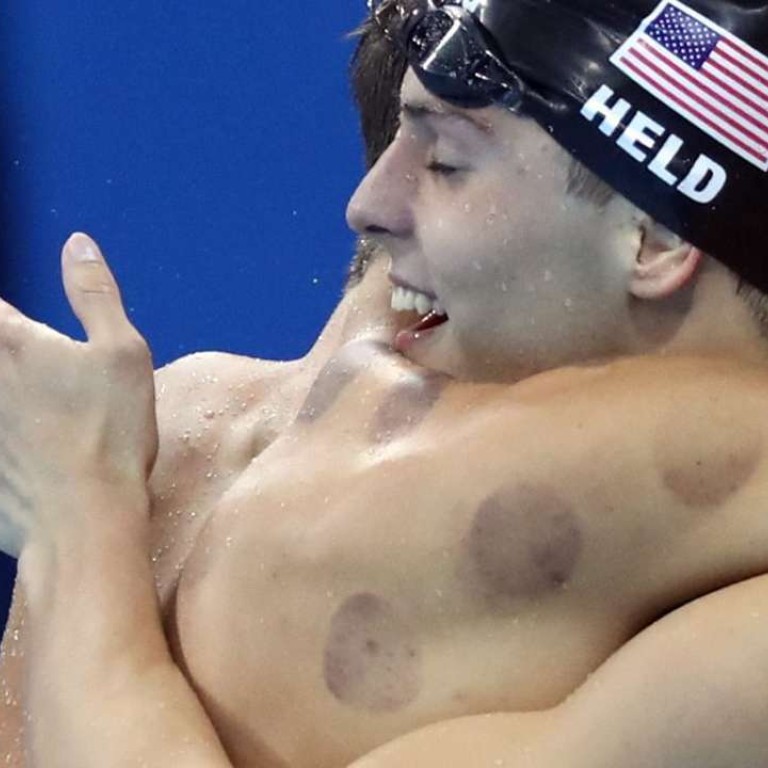
Was Michael Phelps’ latest gold medal a victory for Traditional Chinese Medicine?
Many western viewers were bemused by the marks on his back from ancient practice of cupping
Another Games, another gold for the American great Michael Phelps.
But perhaps the swimming legend’s 19th gold is one China can lay a (tenuous) claim to.
Many viewers in the United States and Europe were bemused by the circular purple marks on the star’s back and shoulders as he led the US 4x100m freestyle relay team to victory at the Rio Olympics.
WATCH: Golden moments on Day 2 at Rio Olympics
But they would have course have been instantly recognisable to viewers in Hong Kong as bruises from cupping, a popular form of treatment in traditional Chinese medicine for everything from the common cold to musculoskeletal conditions.
“I have done it for a while but I haven’t had bad ones like this for a while,” Phelps told reporters after Monday’s 400 metres butterfly heats.
“That’s where they usually hurt the most,” added the American, rubbing his right shoulder.
“I’ve done it before pretty much every meet I go to. I just asked for a little cupping yesterday because I was sore and the trainer hit me pretty hard with one and left a couple of bruises.”

The ‘science’ behind it, according to TCM practitioners, is that the vacuum created by putting heated cups on the skin removes ‘dampness’ in the body, preventing stagnation of blood flow and improving one’s flow of qi.
There is archaeological evidence of the practice in China going back to at least 1000 BC. Critics say there is no scientific proof that it has any benefits.
“It’s like the decorative garnish on a steak,” said Keenan Robinson, director of high performance for the American swim team.
“Mike’s walking around looking like a dalmatian but it’s just another recovery modality.”
A photo posted by Natalie Coughlin (@nataliecoughlin) on Dec 9, 2015 at 11:02am PST
It has become popular with celebrities such as Gwyneth Paltrow, Jennifer Aniston and Victoria Beckham and increasingly so with athletes.
Phelps was seen undergoing the treatment in an advert filmed ahead of Rio, and fellow American swimmer Natalie Coughlin is also a fan of the treatment, posting pictures of herself undergoing it on Instagram.
Hong Kong’s Consumer Council issued a warning over cupping in 2010, saying it could induce injury if not properly applied.
Phelps, the most decorated athlete in Olympic history, swears by it to help gain an edge.
“Imagine if you have a tent and some of the cords are too tight, it’s going to distort how the entire tent functions,” explained Kevin Rindal, one of only four chiropractors in the world Phelps will allow to work on his body.
“The athlete’s muscles have to be in perfect tension,” he added. “If it’s too tight on one side, neurologically it can cause other muscles to not fire as well.”
Phelps, who won a remarkable 19th Olympic gold in Sunday’s 4x100m freestyle relay, is not the only cupper on the American swim team, while several gymnasts competing in Rio also have regular sessions.
“We are compressing tissue, massaging it,” said Rindal. “We put the cups on Michael and separate out the layers of fascia to allow for better glide between the muscles. It’s fine tuning of the tissue.”
However, there is little science to confirm any real physiological benefit.
“There is a psychological component,” admitted Robinson. “Michael has been doing this for a long time to feel good.
“It’s like you see people walking round looking like Hellraiser with pins in them -- anything to make the body feel good,” he added. “But Mike’s probably the best at telling you what’s voodoo and what’s actually working.”
Additional reporting by Agence France-Presse

